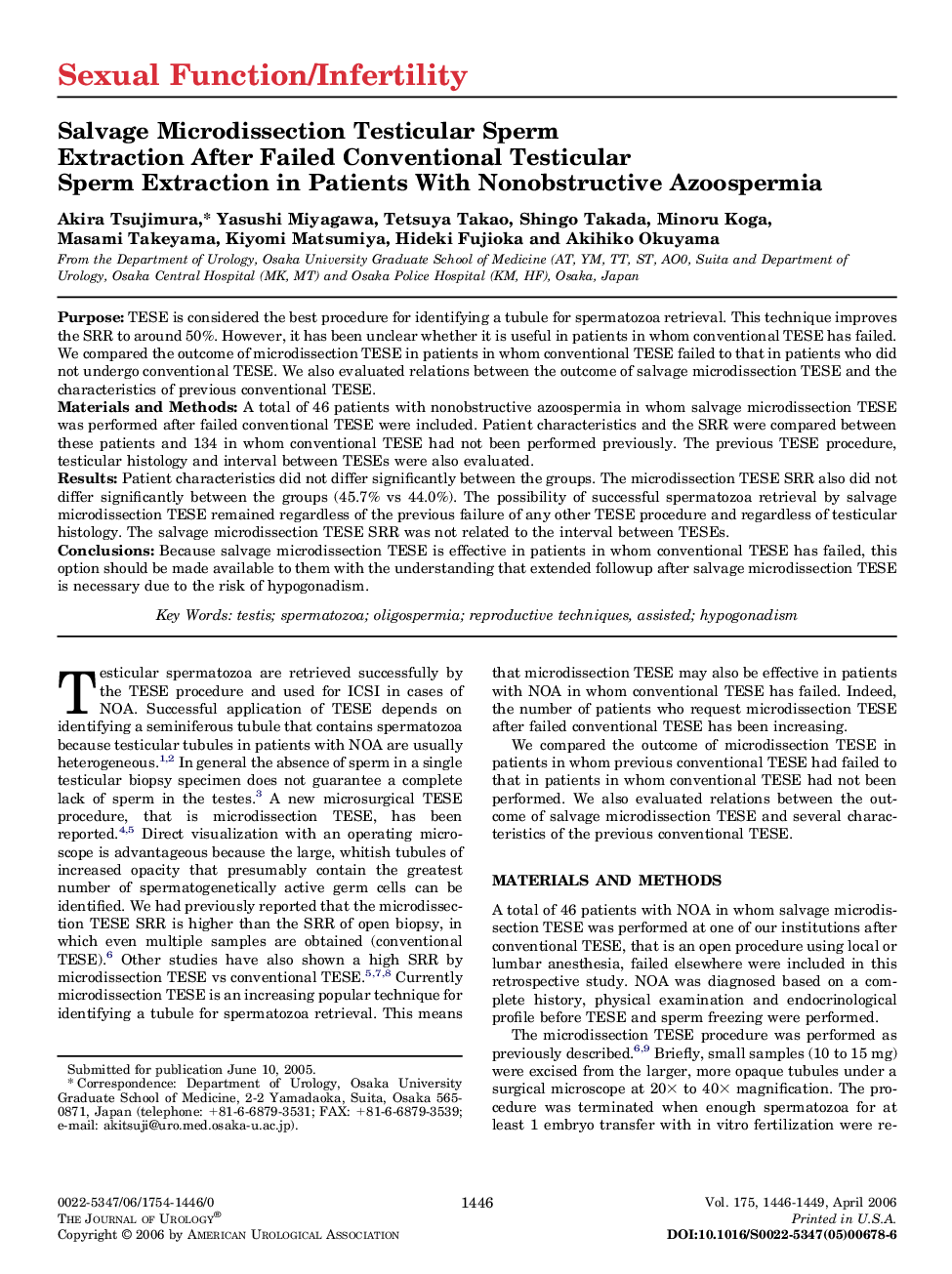| Article ID | Journal | Published Year | Pages | File Type |
|---|---|---|---|---|
| 3879814 | The Journal of Urology | 2006 | 4 Pages |
PurposeTESE is considered the best procedure for identifying a tubule for spermatozoa retrieval. This technique improves the SRR to around 50%. However, it has been unclear whether it is useful in patients in whom conventional TESE has failed. We compared the outcome of microdissection TESE in patients in whom conventional TESE failed to that in patients who did not undergo conventional TESE. We also evaluated relations between the outcome of salvage microdissection TESE and the characteristics of previous conventional TESE.Materials and MethodsA total of 46 patients with nonobstructive azoospermia in whom salvage microdissection TESE was performed after failed conventional TESE were included. Patient characteristics and the SRR were compared between these patients and 134 in whom conventional TESE had not been performed previously. The previous TESE procedure, testicular histology and interval between TESEs were also evaluated.ResultsPatient characteristics did not differ significantly between the groups. The microdissection TESE SRR also did not differ significantly between the groups (45.7% vs 44.0%). The possibility of successful spermatozoa retrieval by salvage microdissection TESE remained regardless of the previous failure of any other TESE procedure and regardless of testicular histology. The salvage microdissection TESE SRR was not related to the interval between TESEs.ConclusionsBecause salvage microdissection TESE is effective in patients in whom conventional TESE has failed, this option should be made available to them with the understanding that extended followup after salvage microdissection TESE is necessary due to the risk of hypogonadism.
